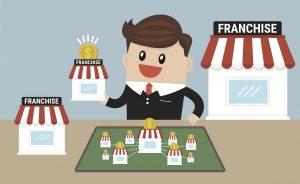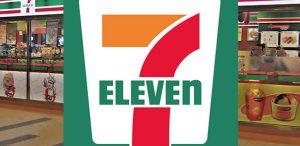Franchising in Australia features around 1,100 franchise brands across 79,000 outlets and employs nearly half a million Australians (Griffith University, Franchising Australia Survey, 2016, supplied by Franchise Advisory Centre).
Despite this, franchising isn’t always looked upon fondly.
 The Franchise Institute CEO James Corne told us in the latest issue of Convenience World that franchising has had its “fair share” of negative press recently. He believes “the headlines cherry-pick the sensational and the dramatic, largely ignoring the many franchise businesses who are doing well”.
The Franchise Institute CEO James Corne told us in the latest issue of Convenience World that franchising has had its “fair share” of negative press recently. He believes “the headlines cherry-pick the sensational and the dramatic, largely ignoring the many franchise businesses who are doing well”.
Referencing Griffith University’s Franchising Australia Survey, Mr Corne says the total annual sales revenue for Australia’s entire franchise sector is estimated at $146 billion, up by $2 billion from 2014.
“[In addition,] the sector employs 472,000 permanent, part-time and casual employees, also up from 2014,” he says.
“So, despite a sluggish economy and negative press, why is the franchise sector still a robust and dynamic part of our economy? The answer is because despite all the nay-sayers and blamers, the franchise sector has a recipe for success that works well, when followed.”
Mr Corne pinpoints five key ingredients:
- A proven and replicable business model
- Comprehensive operational and marketing support
- Owner operators who have a vested interest in making their business a success
- Strength in numbers
- A franchisor who adopts a win: win philosophy.
 7-Eleven’s shared interest with franchisees
7-Eleven’s shared interest with franchisees
7-Eleven Australia’s franchise offer includes marketing and brand support, business administration services, compliance support, and buying and merchandising expertise.
According to 7-Eleven General Manager of Retail Operations Braeden Lord, the company also manages property, utilities, refurbishments, equipment and a range of other components of operating a high standard convenience store.
“Our model is based on a profit split arrangement,” he says, “which sees 7-Eleven pay for a number of significant costs from its share of profits. Rent, utilities, equipment, maintenance, technology, innovation development and even refurbishments are some of the costs covered.
“This is in addition to things like marketing and brand costs, compliance support, and business administration.”
The model format is claimed to mean that both franchisor and franchisee have the shared goal of sustainably maximising growth in each store.
“Our model helps to ensure we have a shared interest with our franchisees in helping them grow their individual businesses,” says Mr Lord. “With so much happening in the day-to-day retail environment, it is easy to spend all your time focusing on working in your business. The rewards for taking the time on a regular basis to work on your business can be outstanding. Our field teams are there to help with that.
“Our field-based retail business managers (RBMs) are dedicated business coaches who work with their group of stores to support them to achieve the potential of their businesses on an ongoing basis.”




